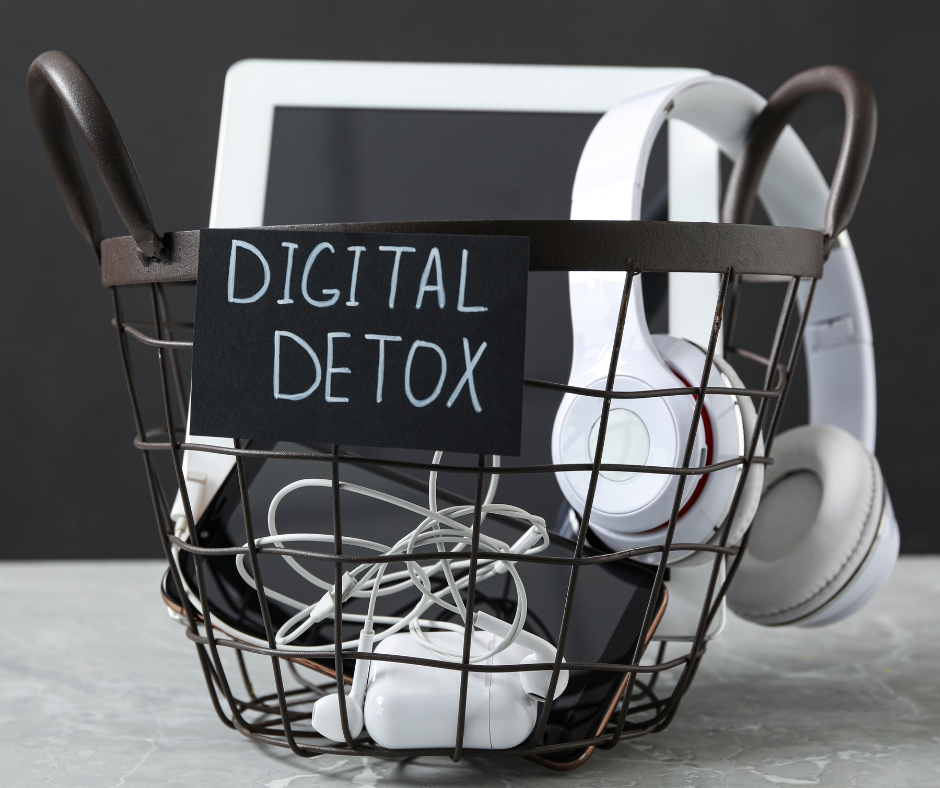Well-being in a Digital World: How to Disconnect More
 Recent research suggests that humanity will spend a combined total of 500 million years using social media in 2024 and that a typical internet user now spends 6 hours and 40 minutes online each day.
Recent research suggests that humanity will spend a combined total of 500 million years using social media in 2024 and that a typical internet user now spends 6 hours and 40 minutes online each day.
Excessive screen time has been associated with various health concerns, including eye strain, disrupted sleep patterns, sedentary behavior, and mental health issues such as anxiety and depression. There is also a potential negative effect on relationships, social interactions, and the ability to stay present in your daily life.
Understanding the consequences of too much screen time is essential in maintaining a healthy lifestyle. While our devices and ability to stay connected at all times, offer numerous benefits and opportunities, we must commit to a healthier amount of consumption. Nearly all screen time activities can be linked to less happiness, while all non-screen time activities can be linked to greater happiness.
It’s time to take back control and your ability to let go, disconnect, and relax the mind. Begin your healthy shift and learn how to digitally disconnect more.
Steps to Digital Detox and a Healthier Relationship with Your Devices:
- Monitor your digital activity: The first step to gaining control is to get a detailed understanding of your tech use. It is important to be aware of how much time you spend using digital devices and how you interact with them. Most smartphones now have the capability of monitoring your activity and can provide you with the specific amount of time you spend and where you spend it.
- Set boundaries: It is a digital world, and we are just living in it. Set daily limits on the apps and websites you use. Allow yourself only specific times and places to use your digital devices. Have designated times throughout your day that you completely disconnect, even if it is only for very short periods of time in the beginning. This will allow you to recognize how beneficial these digital breaks can be.
- Focus mode: Use technology to your advantage. Most devices now have the capability of being placed in a focus mode, where all notifications are silenced, and you are not easily distracted.
- Prioritize real-time relationships: Spend time with your family and loved ones without digital distractions. Try turning your phone off or putting it in a different room to eliminate the urge to touch your device and soak in the wonderful moments with your favorite people.
- Bedtime curfew: Disconnect from your devices after a certain time of the day. This will not only help you wind down from the day, but it will assist in a better night’s sleep.
Here are some tips to creating a technology free bedroom:
- Create a dedicated space for electronics: Find a spot outside the bedroom where you can put all of your electronics to sleep at night. This is an ideal place to put chargers so that all your devices will have a full battery in the morning.
- Develop a new bedtime routine: For children and adults, a steady routine can reinforce healthy habits, so design a fresh bedtime routine that doesn’t involve having the TV on or checking your messages. Instead, include steps that are practical, relaxing, stretching, or reading in dim light.
- Set consistent “screens off” and “lights out” times: Have a consistent deadline for when you’re going to shut off your electronics and when you’re going to turn off the lights to fall asleep. Having a firm “screens off” time keeps you from staying up to check just one more email or watch one more episode. It also helps you get used to a set period without screen time and promotes a regular sleep schedule.
- Keep something to read nearby: Reducing nightly screen time is a great way to recapture the joy of reading a printed book or magazine. Keep something that you enjoy reading on your nightstand so that you’re less likely to feel like you are missing out from your electronics.
- Only use your bed for sleep: Don’t work, shop, or read news in your bedroom. This allows your brain to associate being in bed with sleep, minimizing the urge to bring technology into bed with you.
- Learn relaxation techniques: Relaxation techniques like deep breathing or mindfulness meditation can help calm your mind and at the same time put you in a good frame of mind to doze off.
- Set boundaries with friends, family, and work: Many people think they need to sleep with their phone nearby because they may have to immediately respond to something important. To get away from the “always-on” mindset, tell friends, family, and work colleagues that you won’t be accessible during the late evening and early morning. Setting this boundary gives you the freedom to make your bedroom technology-free without worrying about missed messages, calls, or emails.
Unplugging and establishing healthy boundaries around your screen time and consumption of technology can be a refreshing and reviving break from our overconnected world. Give yourself the gift of this new freedom that will allow you to live more in the present with more clarity, joy, and peace of mind.

